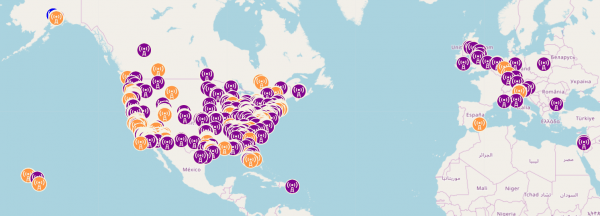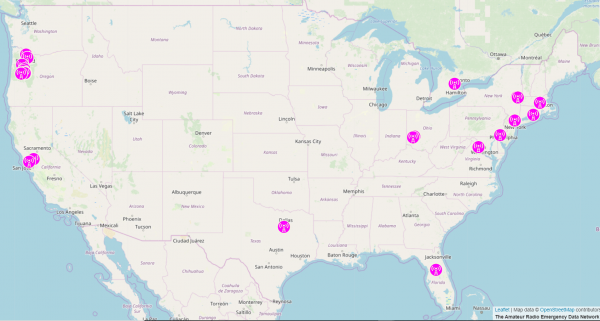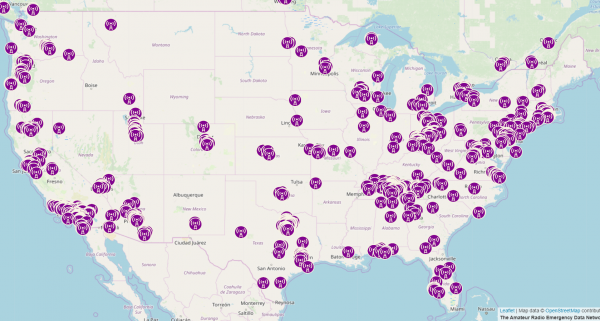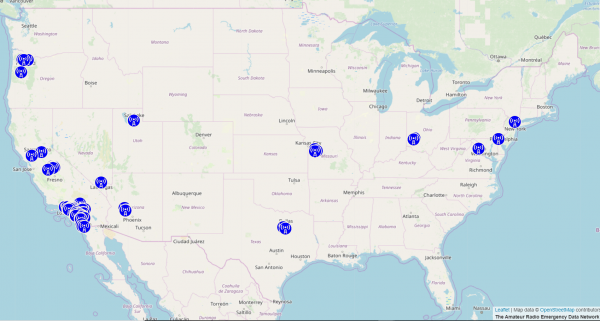You are here
Call to Action in Defense of Part 97 Allocations
ARRL Call to Action in Defense of Part 97 Allocations in the 3 and 5 GHz Bands
The FCC WT Docket 19-348 and WT Docket 19-138 will severely curtail growth of one of the newest and most effective means for Amateurs to support emergency communications. Existing installations will be severely curtailed or, with no reasonable alternatives, be forced to cease operations. Thousands of hams have built or are in the process of constructing high-speed data networks in the 3 & 5 GHz ham microwave allocations.
Background
AREDN (Amateur Radio Emergency Data Network) was an outgrowth of the ARRL working group on High-Speed Multimedia (HSMM). It has evolved over the past 10-12 years from its first implementation by Broadband Hamnet (BBHN). Over the years the AREDN Project has developed software support for nearly 70 commercial wireless routers---moving them from their Part 15 allocation into adjacent Part 97 allocations in the .9, 2, 3, and 5 GHz bands---providing an inexpensive and easy way for hams to implement high-speed (up to 144 Mbps) data networks in support of Emergency Operations Centers (EOCs), Non-governmental Agencies (NGOs) and first responders. The project has twice been recognized by the league for the significance of its achievements by awarding the Project the ARRL Microwave Development Award in 2014 and 2018.

From our website statistics we estimate that over 2600 hams have or are in the process of building these networks. The above illustration depicts currently active locations, voluntarily disclosed (hams need to notify the AREDN Project to appear on this map). We believe approximately 60% report their locations (referred to as “nodes”).
These networks are comprised of RF links in one or more of four ham bands AREDN software supports.
| Band | .9 GHz | 2 GHz | 3 GHz | 5 GHz |
| Network Nodes | 65 | 2602 | 197 | 1068 |
These networks are comprised of RF links on one of the four ham bands AREDN supports. These maps illustrate the diversity:
900 MHz

2 GHz

3 GHz

5 GHz

The devices that form these links are comprised of inexpensive ($45-$95) commercially available wireless ISP routers which have been repurposed for ham use by replacing the original manufacturer’s software with that developed by The AREDN Project. A detailed discussion on just how these networks are constructed and operate can be found in the June 2017 QST, in an article entitled AREDN — A High-Speed Data Network – A thorough discussion of a high-speed multimedia network for public service applications (https://www.arednmesh.org/content/qst-june-2017).
These networks transport data via 802.11n WIFI-like encoding and TCP/IP, the same protocols utilized on the Internet, so much of what is possible over the Internet is also possible across these networks. This empowers hams to provide agencies with texting, email, Voice-over-IP (VoIP) telephone service, video surveillance and video conferencing, as well as agency-access to their respective Internet-based cloud services.
In building a network to provide these services, best practice is to start with a “backbone” of nodes on the highest ground available followed by additional distribution nodes within communities. Generally, all of these locations coincide with where wireless ISPs (WISPs) have placed their equipment. It is impossible to compete with WISPs in spectrum where Part 97 and Part 15 allocations overlap, so as a result AREDN-based networks are configured to operate on channels inside the Part 97-only portions of the 5 GHz, and 3 GHz bands where no commercial allocations currently exist in the US.
The following chart illustrates the 24 channels available to AREDN network implementers in the 3 GHz band. Actual channel selection is based on the local band plan and is coordinated with other ham interests

A substantial part of the Part 97 allocation at 5 GHz is already shared with Part 15 WISPs, however 14+ channels provide enough spectrum so that a useful colocation can currently exist:

The Current FCC Proposals
The current WT Docket 19-348, “Facilitating Shared Use in the 3.1 – 3.55 GHz Band” and WT Docket 19-138, “…a fresh and comprehensive look at the 5.9 GHz band rules” will devastate these networks. 19-348 will eliminate our use of the most effective resource hams have to build these networks.
The AREDN Project is able to leverage these low-cost commercial devices solely because they are designed to operate on adjacent allocations (worldwide on .9, 2.4 and 5.7 WIFI; outside the US on 3.4 WIFI). Moving to other allocations would be difficult if not impossible without a complete redesign, manufacture, purchase, and installation of new custom Amateur hardware and software… raising the price out of reach for the typical ham.
If these proposals succeed:
- the Part 15 “competition” for this spectrum will effectively kill this technology over ham radio;
- it will have a significant potential impact on the EOCs, NGOs, and other disaster responders which depend on the backup services they are currently being provided by the ham community;
- it will negatively impact the influx of new hams, as an ongoing stream of computer technical-types are flowing into our hobby due to their interest in and the success of this ham radio technology;
- It will completely devalue a large part of the investment made by the amateur radio community. Their investment includes tens of thousands of dollars and likely as many hours freely given in support of public service. Many amateurs may be induced to wonder about the wisdom of attempting to provide any public service if their efforts are so capriciously thrown away.
The AREDN project is eager to assist the league in persuading the FCC to not move forward with these dockets. We look forward to an open channel of dialog.
Theme by Danetsoft and Danang Probo Sayekti inspired by Maksimer
